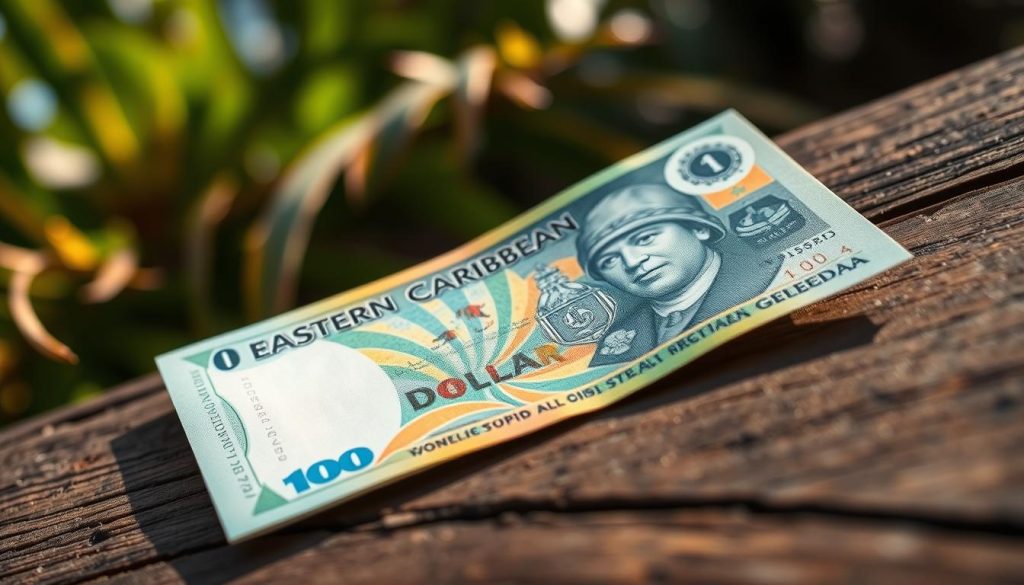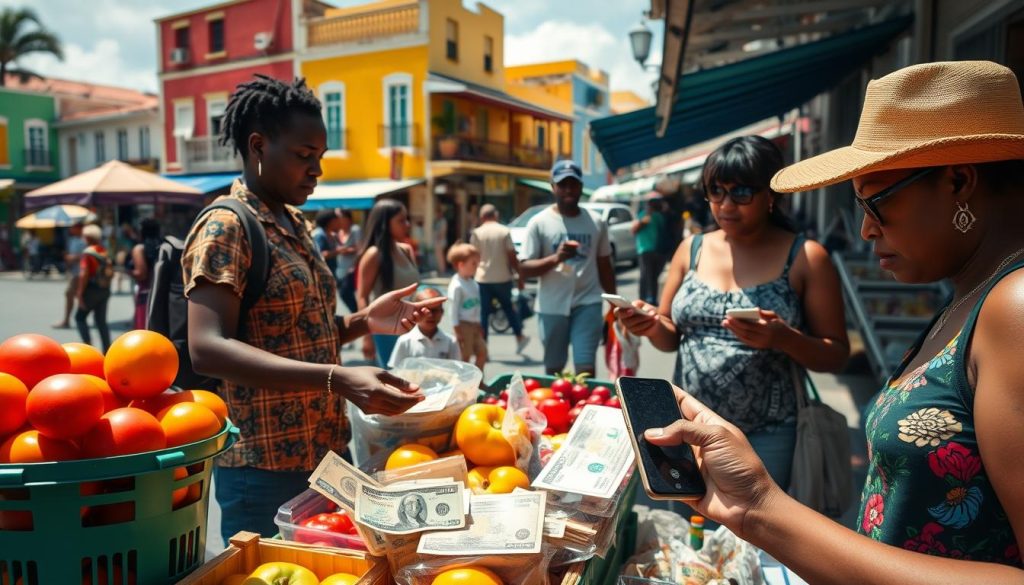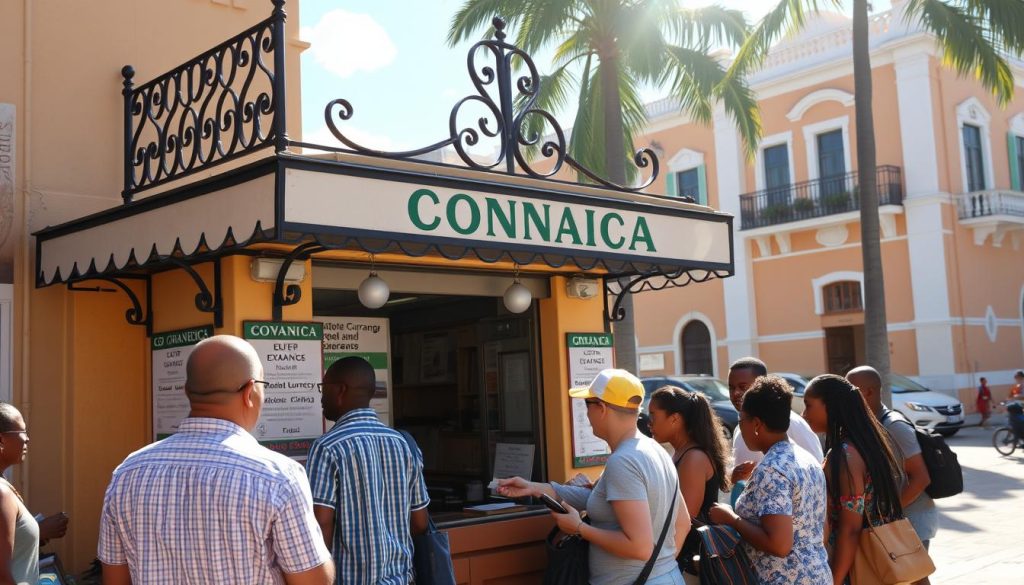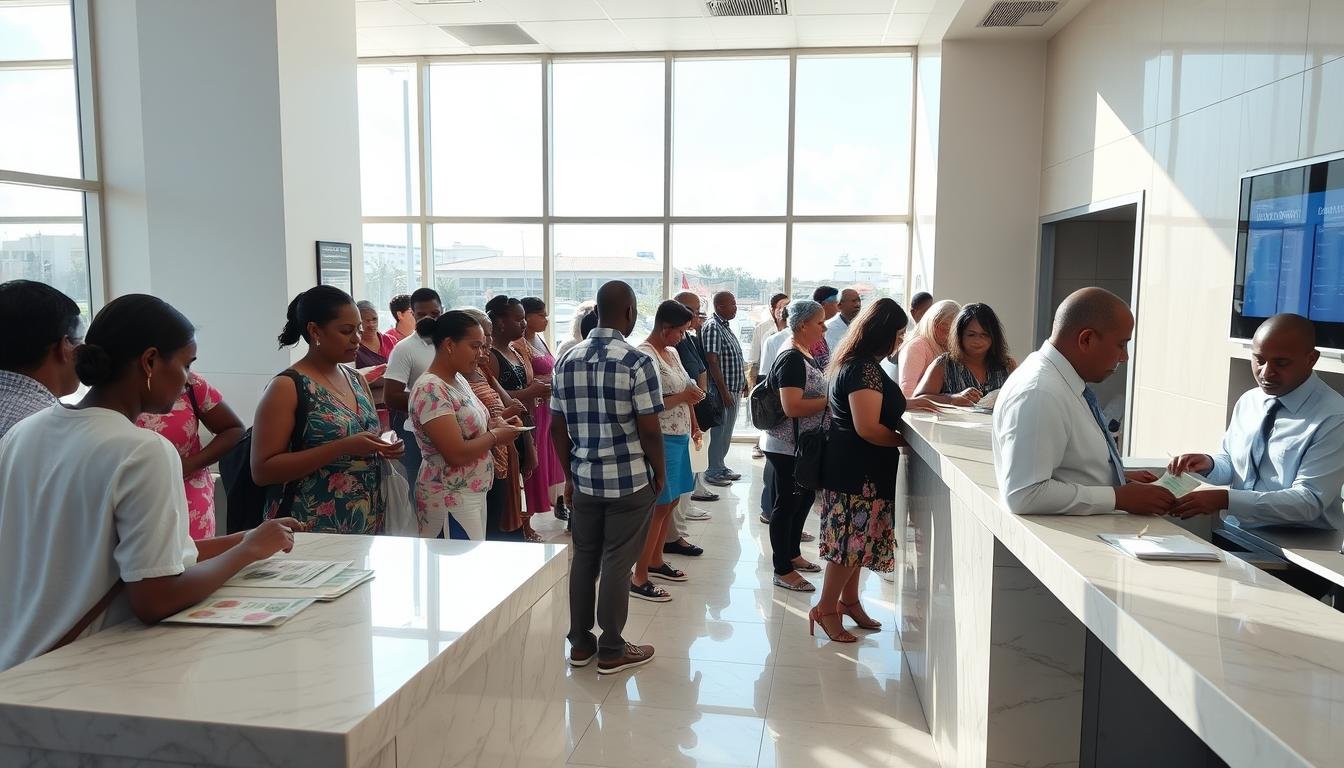✓ Accommodations✓ Flights✓ Rental Cars✓ Tours & Activities
Did you know that the Eastern Caribbean dollar is pegged to the US dollar at a fixed rate of 2.70? This unique system ensures stability for visitors navigating the island’s economic landscape. Whether you’re planning a beach getaway or exploring local shops, understanding the currency and payment options can make your trip smoother.
On this stunning Caribbean island, you’ll find a mix of cash and card transactions. The local currency is widely accepted, but US dollars are also commonly used in hotels, restaurants, and tourist spots. ATMs are available at major banks, making it easy to withdraw cash when needed.
This guide will help you manage your money efficiently, from understanding exchange rates to choosing the best payment methods. Whether you’re dining at a local restaurant or booking a hotel, you’ll find practical tips to maximize the value of every transaction.
Navigating Grenada’s Economy and Currency Landscape
Navigating the local economy starts with understanding the Eastern Caribbean dollar. As the official currency, it’s used for everything from buying groceries to paying for services. The fixed exchange rate of 2.70 XCD to 1 USD ensures stability, making it easier for you to plan your expenses.

Understanding the Eastern Caribbean Dollar
The Eastern Caribbean dollar is the backbone of daily transactions. You’ll find it in denominations of coins and bills, making it convenient for small purchases. While US dollars are accepted in many places, using the local currency often gives you better value, especially at smaller shops and restaurants.
Exchange rates are consistent across the island, but it’s wise to check for any fees when converting your money. ATMs are widely available at major banks, allowing you to withdraw cash easily. Credit cards are accepted at hotels and larger establishments, but carrying some cash is always a good idea for smaller vendors.
Local Money Practices and Exchange Rates
Local money practices can influence your spending. For example, taxi fares and beachside vendors often prefer cash. Understanding the exchange rate helps you avoid overpaying, especially when dealing with independent money changers.
Banks on the island offer reliable services, but it’s important to be aware of operating hours. Some smaller shops may not accept credit cards, so having the local currency on hand ensures smooth transactions. By planning ahead, you can make the most of your money and enjoy your time without financial stress.
Essential Payment Methods and Travel Money Tips
Managing your finances while traveling doesn’t have to be stressful. By understanding the best payment methods, you can save time and money. Whether you’re dining at a local restaurant or shopping at a boutique, knowing your options ensures a smooth experience.

Using Credit and Debit Cards
Major credit cards like Visa and Mastercard are widely accepted across hotels, car rental companies, and select shops. This makes them a convenient option for larger transactions. However, smaller vendors may prefer cash, so it’s wise to carry both.
Debit cards linked to bank accounts are also useful for purchases and cash withdrawals. Always check for foreign transaction fees, as these can add up quickly. Using cards with low fees or no international charges can help you save on every transaction.
Travel Debit Cards and Multi-Currency Options
Travel debit cards and multi-currency solutions like Revolut or Wise offer competitive exchange rates and low fees. These cards allow you to hold multiple currencies, making it easy to switch between the local currency and your home currency.
Prepaid travel cards are another great option. They often incur lower fees compared to traditional credit or debit cards. By using these tools, you can maximize the value of your money and avoid unnecessary costs.
Finding ATMs and Using Money Changers
ATMs are available at major banks across the island, making it easy to withdraw cash. Be mindful of operating hours, as some banks may close early. Always choose ATMs in secure locations to ensure safety.
Money changers can be found at airports and tourist areas. While they offer convenience, their exchange rates may not always be the best. Comparing rates beforehand can help you get the most for your money.
By planning ahead and using the right payment methods, you can focus on enjoying your trip without financial worries.
Grenada: Ultimate Travelers Guide to Currencies & Payments
Planning your trip involves more than just packing; it’s about managing your money wisely. Understanding the best currency to use and where to exchange it can save you time and ensure smooth transactions. Whether you’re at the airport, checking into a hotel, or shopping at a local store, knowing your options is key.

Choosing the Best Currency for Your Trip
When visiting this beautiful island, you’ll need to decide between using the Eastern Caribbean dollar or US dollars. The local currency is widely accepted and often gives you better value at smaller shops and restaurants. However, US dollars are convenient for larger establishments like hotels and car rentals.
Here’s a quick comparison:
- Local Currency: Ideal for small purchases, taxis, and beachside vendors.
- US Dollars: Useful for hotels, tours, and larger transactions.
Exchanging money before your trip can save you from high fees at the airport. Alternatively, using a travel card with multi-currency features offers flexibility and competitive exchange rates.
Managing Costs at Airports, Hotels, and Local Shops
At the airport, you’ll find money changers and ATMs. While these are convenient, their rates may not always be the best. Comparing options beforehand can help you save on every transaction.
Hotels often accept credit cards, but some may add a service charge. Always check for additional fees to avoid surprises. Local shops and markets usually prefer cash, so carrying some Eastern Caribbean dollars is a smart move.
Here are a few tips to manage your costs:
- Use ATMs at major banks for better rates and lower fees.
- Compare exchange rates before converting your money.
- Carry a mix of cash and cards for flexibility.
By planning ahead, you can minimize transaction fees and enjoy your trip without financial stress.
Conclusion
Making the most of your trip starts with smart money management. Using the Eastern Caribbean dollar often gives you better value, especially at smaller shops and local markets. Credit and debit cards are convenient for larger transactions, but carrying some cash ensures smooth dealings with taxis and beachside vendors.
Finding ATMs at major banks is easy, but always compare exchange rates to avoid extra costs. Travel debit cards with multi-currency features offer flexibility and competitive rates, making them a great option for frequent transactions.
By planning ahead and choosing the right payment methods, you can save time and avoid unnecessary fees. Use these tips to enhance your experience and keep your transactions secure. Enjoy your journey with confidence!
The above is subject to change.
Check back often to TRAVEL.COM for the latest travel tips and deals.






